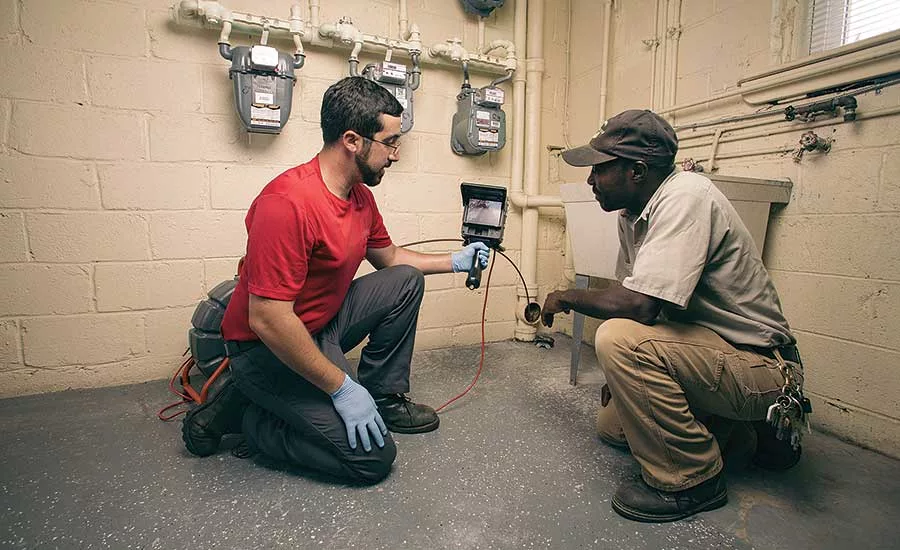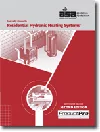Jim Criniti: Don’t sell, let your customers buy assessment
Sales practices to guarantee success.

To give customers the power to make informed decisions, show them that you know exactly what the issue is. Zoom Drain uses a video inspection to clearly show the customer the state of their pipes. Photo credit: Zoom Drain
In the plumbing and mechanical industry, we’ve spent a lot of time and money trying to learn to sell over the years. Has it worked? Sometimes.
Sometimes, though, no matter how hard you try to implement new sales techniques, the customer just isn’t buying. Or, almost worse, especially in an emergency service-based industry, they buckle under the pressure of needing a fast repair, sign on the dotted line and almost immediately regret the transaction.
In today’s online world, that can mean bad reviews and accusations of snake oil and shifty sales tactics. It can hurt both your bottom line and your company’s good name.
What’s the solution, then? What are the best sales practices to guarantee success? It’s pretty simple, actually. Don’t try to sell at all.
Aim for the sweet spot
Every company should aim for the sweet spot in the sales process: Your service experts aren’t spending their time and energy “selling” your services, but your customers are still buying because you’ve empowered them with the right information.
One of the keys in my line of work, the drain cleaning business, is providing customers with the honest and accurate assessments and information they need to make the decision to buy. I try not to think of it as selling, just giving them what they need.
If a company uses scare tactics or vague descriptions of problems to pressure customers to buy services that aren’t needed or necessary, they’re hurting themselves and the whole service industry. At Zoom Drain, we’ve created a set of video inspection standards and best practices so that our service experts and our customers are clear on what acceptable pipe condition is, and what needs to be done to remedy problems.
Our standards are based on a framework developed by the National Association of Sewer Service Companies for municipal sewer systems. So, it’s not just a random technician out there saying, willy-nilly, “Oh, this is what I think the problem is,” or “You need this or that,” which paints a really blurry picture. Our technicians can identify problems with uniformity and offer specific remedies.
Truth sells
My message to my technicians is that after a video inspection, we have to rigorously apply those standards and give the customers an honest assessment of the state of their pipes, whether they need replacement, a cleaning or are fine as-is.
The customer needs what they need. If we show the truth — that a pipe needs a high-pressure water cleaning — they’ll buy a high-pressure water cleaning. And, if the pipe is cracked or separated or tree roots have penetrated 50% of the joints, we can both show them and tell them what is acceptable and what isn’t.
The moral of story is when you go out to sell things, you need to have standards established. You have to be transparent with the customers, and you have to provide them with clear and honest information to understand what they need. So now, those jobs basically sell themselves versus having your technicians trying to talk someone into buying something.
Empower your customers
To give customers the power to make informed decisions, show them that you know exactly what the issue is. We use a video inspection to clearly show the customer the state of their pipes. We either bring them over to the monitor and let them see during the inspection or take still photos and attach them to a work order.
It’s important to make sure that each technician is interpreting the results of the inspection correctly. Make sure that everyone is thoroughly trained and engrained in your standards, and that the standards clearly dictate the next step in the process, whether the pipes need to be repaired or replaced or just left alone.
It’s like going to the doctor. Your physician is probably not trying to “sell” you on a procedure. It’s just based on what a test said, determining the next step and what to do. That’s what I consider a sales process — apply standards and provide the information the customer needs on how to proceed.
Create transparency
It all comes down to treating the customer right and protecting them. Be totally transparent as far as what you know about the state of their pipes or plumbing, and what the best practices and next steps are. Customers should not be faced with different technicians recommending different remedies. There should be consistent standards companywide. It’s all about fairness and protection for the customer.
The most important thing to remember about the sales process is you’re not selling your services. You’re providing the customer with the knowledge to decide for themselves what to buy, confident that they aren’t being cheated and have been given complete and honest information.
Looking for a reprint of this article?
From high-res PDFs to custom plaques, order your copy today!





